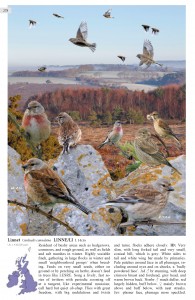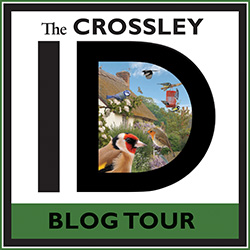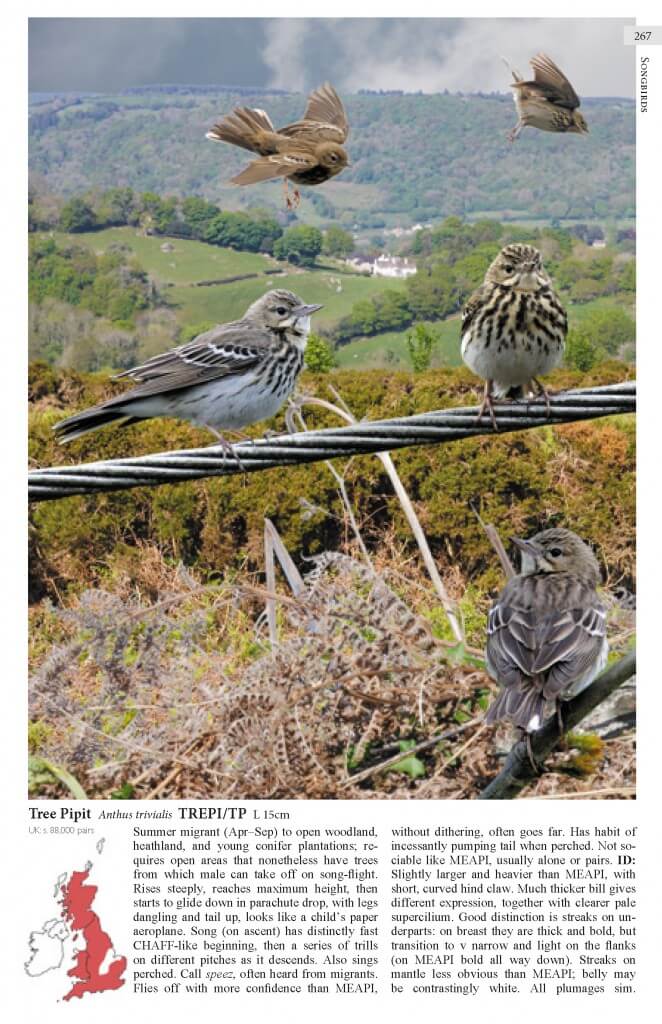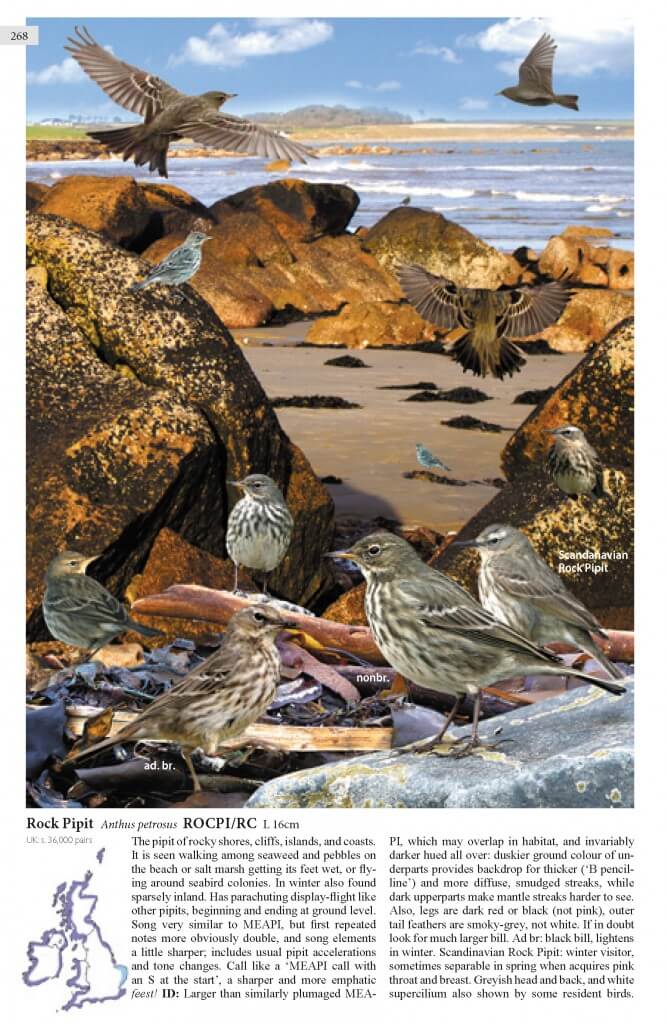This review is part of a ‘blog tour‘ where yesterday, this book, The Crossley ID Guide, was reviewed by 10,000 Birds.
This is a useful guide to bird identification aimed at beginners and intermediate birders. I guess I would put myself at the high end of intermediate as I know all the common birds local to me, all the songs I am likely to hear local to me and don’t make many mistakes or feel adrift with bird identification wherever I watch birds across the UK. I sometimes ponder over a bird identification longer than I think I ought – and they are usually distant waders, flight calls or glimpses of birds – and I would struggle to identify difficult rare warblers or some completely unfamiliar birds.
This guide works for me. I will pick it up during the winter to refresh my memory of identification points for the coming spring and summer.
The guide is a bit different from most similar books – each species has a page (or less than a page for rarer species) where photographs of the bird, sometimes lots of them, are distributed across a photograph of the species’ typical habitat. So you get nine images of Turtle Doves against a background of an overgrown patch of ground with a church tower in the background. This approach sometimes produces surprisingly attractive plates (eg Ptarmigan, Little Egret and Skylark). For flocking species, this approach works very well (eg Fieldfares in the snow, Golden Plover in a field, Waxwings in a wood (why not a car park?)). Showing lots of birds in natural surroundings really does conjure up the ‘feel’ of the bird sighting as well as its technical details. Sometimes it doesn’t work so well in terms of ‘ringing true’: where the bird is rarely seen in numbers (I wish I could see 10 Hen Harriers on a moorland as here) or where the size of the image is misjudged (that walker is going to get one hell of a clout from that giant Bonxie) but then one has to remember it is a device and your traditional field guide shows everything side-on against a light background – how real is that? Basically, the approach is a good one.
The real backgrounds had me wanting to identify them all too – I could do quite a few – and some of the woodland plates are like ‘Where’s Wally?’ pages (see Treecreeper for example).
This book covers over 300 regularly occurring species – all the species you will see in the UK unless you see something really quite rare. The gulls get down to Yellow-legged, Caspian, Ring-billed and Sabines and the waders go as far as Pectoral, Buff-breasted and White-rumped Sandpipers and American Golden Plover.
When I started birdwatching then I identified Rock Pipits because they were on the shore, Tree Pipits because they were in western woods in summer and Meadow Pipits because they were all the other pipits. Those rules of thumb will still get you to the right identification more often than the wrong one but this guide and these plates will help you feel that you know what you are doing.
 And the camera never lies – so just look at the images of malevolence that play across the faces of these Linnets (running ‘joke’).
And the camera never lies – so just look at the images of malevolence that play across the faces of these Linnets (running ‘joke’).
Tomorrow this blog tour moves on to Ireland’s Wildlife.
[registration_form]




I think I will have to write my own id book – Meadow pipits display by flying up and landing in the meadow. Tree pipits fly up and land on a tree. Rock pipits fly up and land on a rock and Water Pipits fly up and land on the …… Well that’s why they are rare!!
I hesitate to comment on the finer points of bird identification as i definitely do not consider myself to be expert on the matter but there seems to be something odd with the tree pipit page. The text refers to a ‘clearer pale supercilium’ when comparing it to the Meadow pipit but none of the TP photos has a very obvious supercilium whilst several of the MPs do. Other guides also indicate TP as having a slightly stronger supercilium so has Crossley just picked photos that don’t illustrate this point very well or are my eyes deceiving me? Overall the descriptions and images would clearly enable correct separation of these two species.
I am sure that there are many people reading this blog with far more advanced bird ID skills than mine and I will be happy to have the error of my ways pointed out to me if I am barking up the wrong tree pipit.
Jonathan – you clearly know your birds. I see what you mean, but the breast patterns all look right for Tree Pipit, don’t they. Tricky things, pipits.
This book seems to be yet another “what is a meadow pipit like?” book.
In the early 1960s I borrowed an absolutely brilliant book from the local library. It had the approach: “you’ve seen a bird; what could it be?” – completely different from any other bird book I have ever seen. It lead you through a decision tree via a series of straightforward questions to identify the bird. As far as I can recall (it was a few years ago…) the book was titled Name That Bird by Eric Fitch Dalglish.
This guide has split opinions in our house – I really like the way the photos are set out and think it will be very helpful, much more so than the “traditional” guides – there have been many times when I have seen a bird in poor light, or flying past, or from behind, or in a distant flock and have been unable to match it up with any of the “close-up side view against white” pictures in our other guides. My husband, however, really dislikes the different photos all being placed in a photo-background and finds it quite offputting! He thinks it looks like a badly done special effect and would rather see all the different aspects of each bird against a plain background.
I do think we will end up buying one though! 🙂
Doesn’t do it for me. I find the artificiality of the overall image distracting and the photo overlays incongruous. I think it’s difficult to compare photographed problem birds directly when their poses are dissimilar, or they’re not shown at all – there are loads of Meadow Pipits in flight in various positions, but only two (displaying) Tree Pipits – how does that help with the flyover juvenile in autumn?
I prefer the idealist image of a painted field-guide as I can better relate the ‘perfect’ image to the individual variability I see in reality. Maybe I’m just too old-fashioned though!
Much as I like Linnets, the ringed bird perched on the rock on the left does appear to be bristling somewhat. Perhaps it’s heard the criticisms.
In respnse to some of the above comments and the quality of the images I wonder if the photo’s are either a poor example of overlaying the birds onto a background or are they deliberately poor so as not to be labelled as “faked” or deliberately misleading, as many wildlife photographer work comes under closer scrutiny, “is it a captive bird”, “how much image manipulation” etc it maybe just a case of being careful
It’s interesting. As someone very much at the lower end of intermediate (and I think Mark is too modest) I can see that the attempt to combine jizz with habitat and pics near the field guide level is potentially valuable. I’ll have a look at a copy – I’d be interested to see how it deals with birds that I still find difficult, the less common raptors for example.
BTW, those linnets are secretly smiling.
Mark – I’ve just written a separate review of this book and also independently noted the Great Skua! A minor niggle though in what I think is a very impressive piece of work.
Andy – great minds think alike? Fools seldom differ?
I’m looking forward to seeing ‘the’ bird book of the year later this week – that Atlas thing.
Very nice…